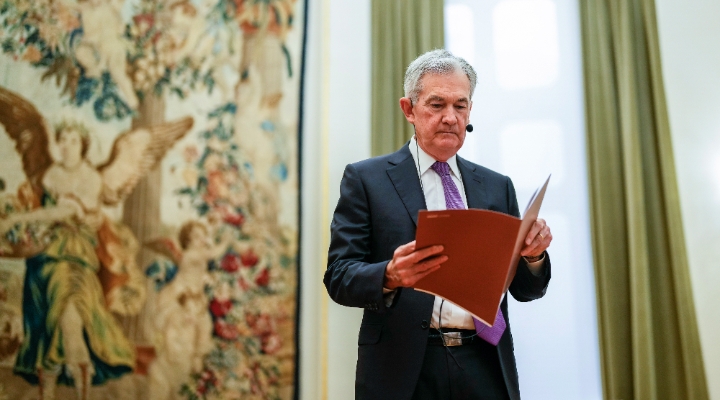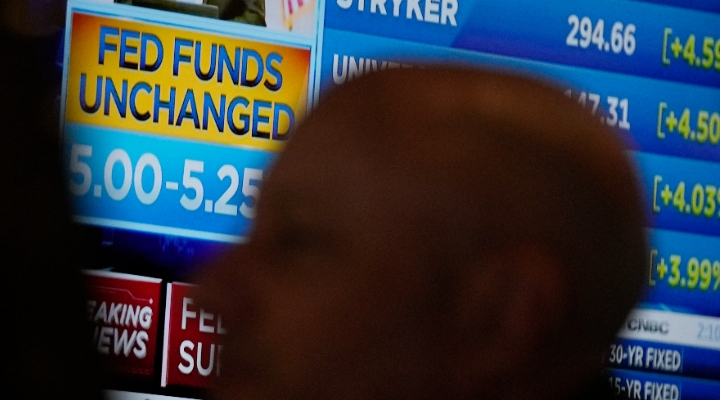:quality(80)/cloudfront-us-east-1.images.arcpublishing.com/morningstar/GJMQNPFPOFHUHHT3UABTAMBTZM.png)
Though Federal Reserve Chair Jerome Powell announced another rate hike yestrday, we think the Fed is done after this, and we expect steep interest rate cuts in 2024.
As widely anticipated, the Fed increased the federal-funds rate by 0.25 percentage points at its Wednesday meeting. This comes after the central bank left rates unchanged at its previous meeting in June. But this is not an about-face. While the Fed “skipped” a rate hike in June in favor of gathering more data, most committee members agreed at the time that one or more additional raises would be appropriate in 2023.
With today’s move, the federal-funds rate moves up to a target range of 5.25%-5.5%. This matches the prior peak reached over 2006-07. You’d have to go back to 2001 to find a period when rates were higher than today. The speed and size of the hikes (over 500 basis points in 16 months) are unmatched by any Fed tightening campaign since 1980.
Treasury Yields and Federal-Funds Rate
Why was this move assumed despite positive news on inflation? The Consumer Price Index increased 3.1% year over year in June 2023, down precipitously from a peak of 8.9% in June 2022. Core inflation rose by just 0.2% month over month in June after having averaged a 0.4% increase earlier in 2023. However, the Fed never responds to one month’s worth of data alone (as Powell frequently emphasizes), so it will take more to reshape its assessment of inflation. This is particularly the case for core inflation (held to be a good gauge of underlying inflationary momentum), which until the most recent report seemed stubbornly high.
Additionally, tightening monetary policy works to bring down inflation mainly by slowing economic growth, generating slack in the economy which cools off prices. With that in mind, the Fed may be unsatisfied that the U.S. economy had been continuing to expand “at a moderate pace.”
Nevertheless, inflation is already falling, owing to improvements on the supply side of the economy. We believe more positive news about inflation will come in upcoming reports. Thus, despite the Fed’s latest projections showing one more rate rise in 2023, we think it’s done with hiking. Federal-funds futures markets agree with this assessment.
Furthermore, we expect growth in economic activity to slow further in the second half of 2023 and the first half of 2024, owing to a slowdown in bank lending (a lagged effect of rate hikes) and more cautious household spending, among other factors. This will exert further downward pressure on inflation. The job market (which is running even hotter than measures of economic output and spending) should also cool, easing pressure on wages. We don’t expect a recession, though it’s possible, but we do expect a period of below-normal economic growth.
Powell has been reluctant to give guidance on the Fed’s future decision-making, preferring to take a “meeting-by-meeting” approach which holistically examines economic trends. We believe the data over the course of the next year will induce the Fed to set interest rates on a much lower path than it’s currently projecting.
With inflation returning to normal and economic growth running below normal by the beginning of 2024, both parts of the Fed’s dual mandate will be signaling for rate cuts. Thus, we expect the first rate cut to come in February 2024, followed by steep cuts until mid-2025 bringing the rate back down to 1.5%-1.75%. This is significantly below the expectations of the market and the Fed itself, which both estimate that the rate will be around 3.5% by mid-2025 (about 200 basis points higher than our view).









.jpg)


.png)









